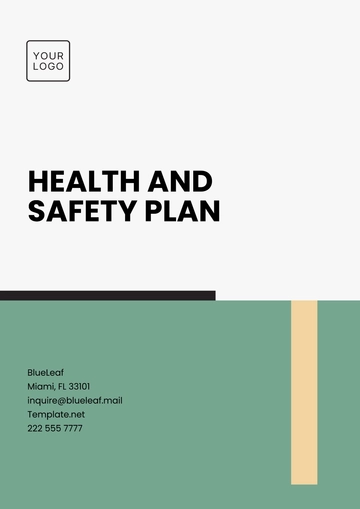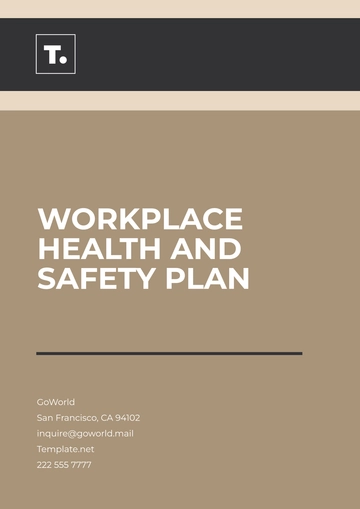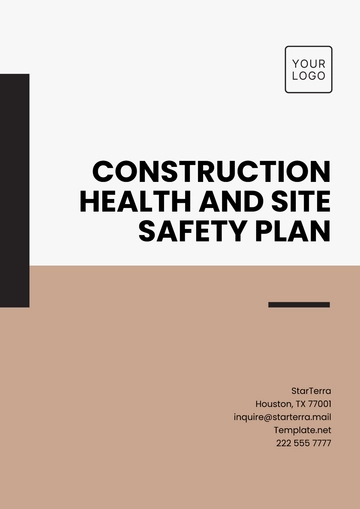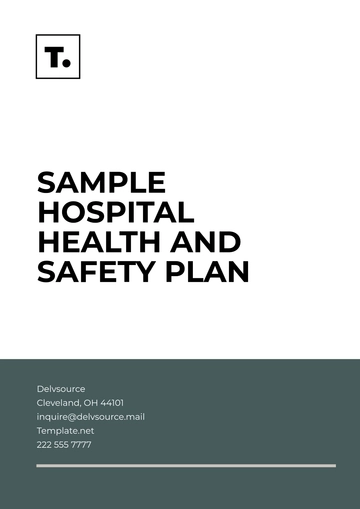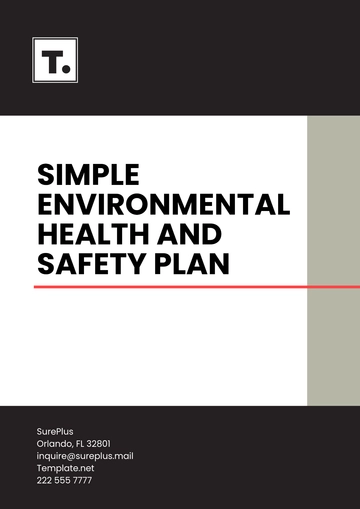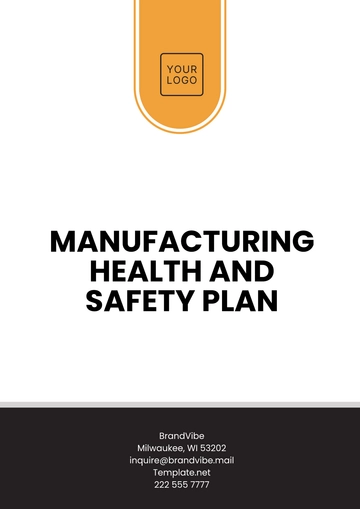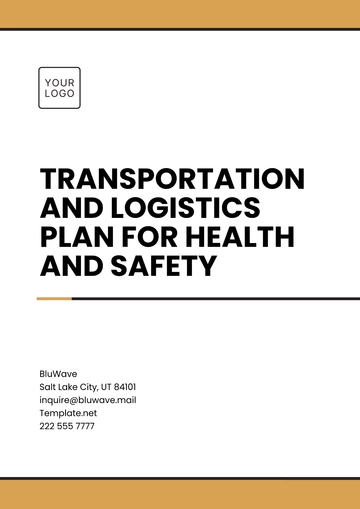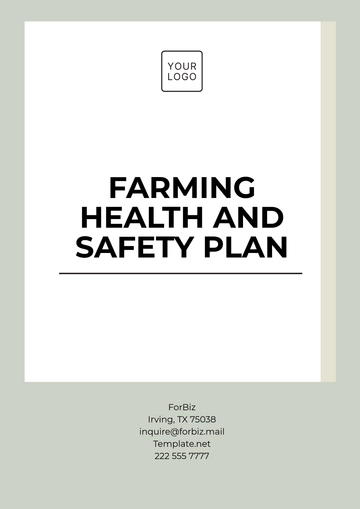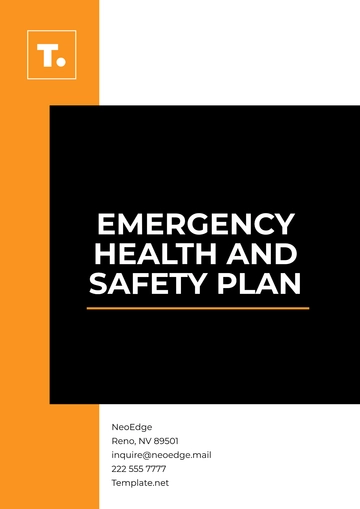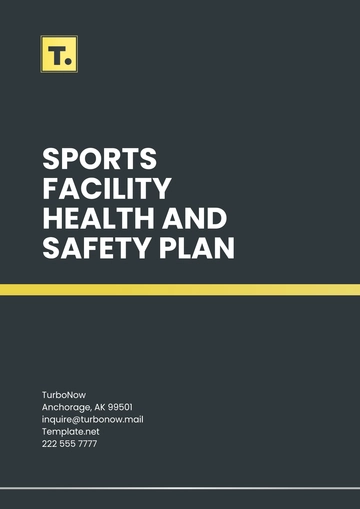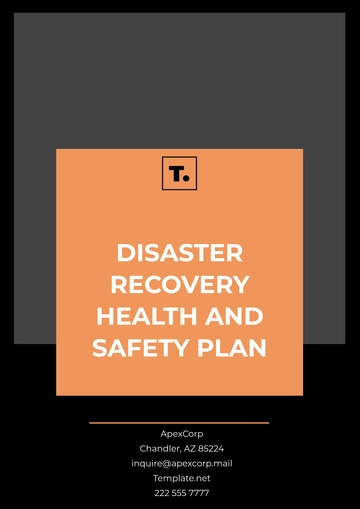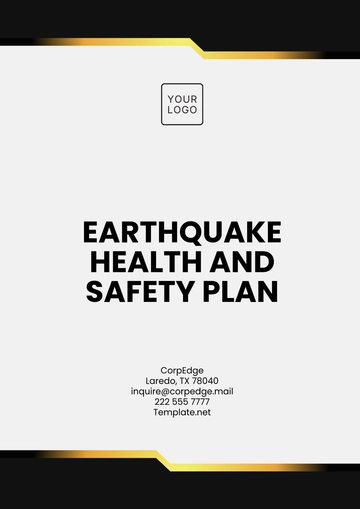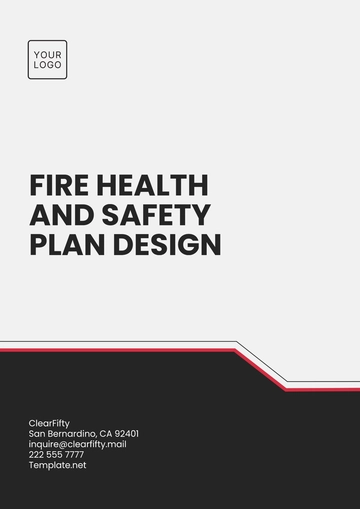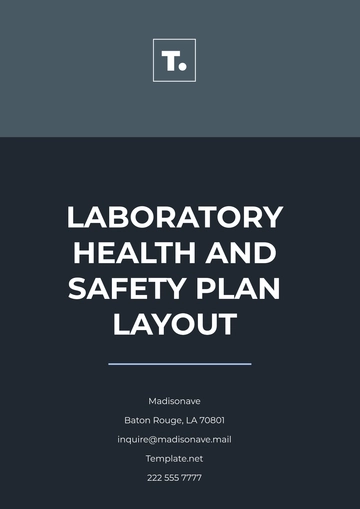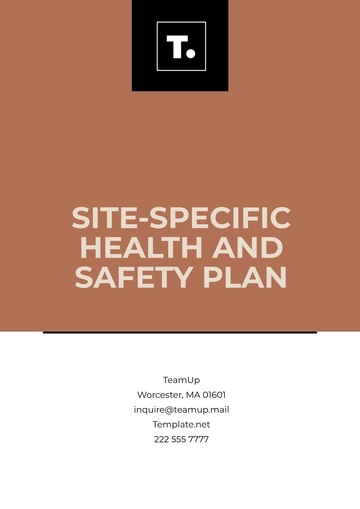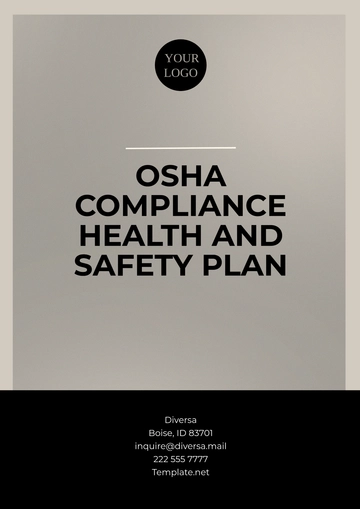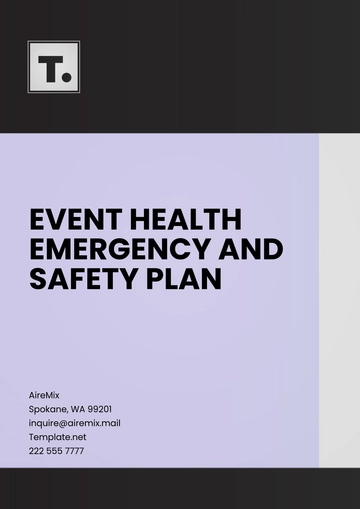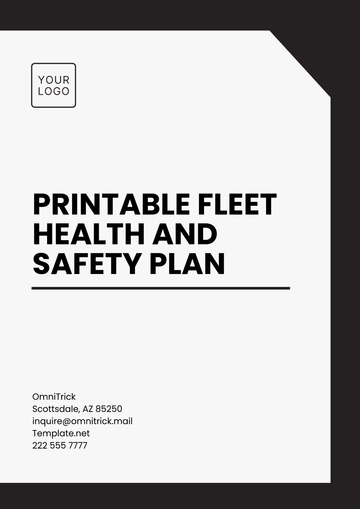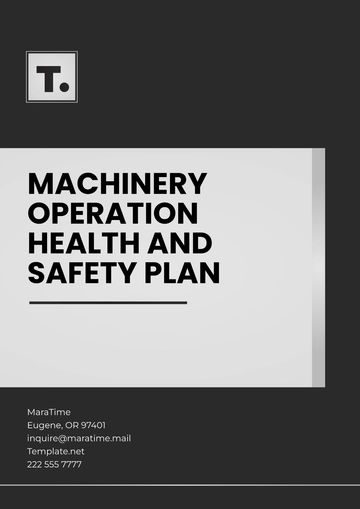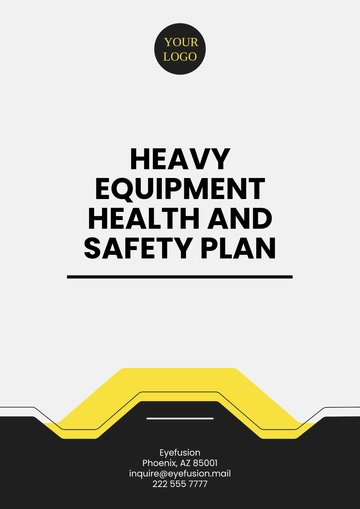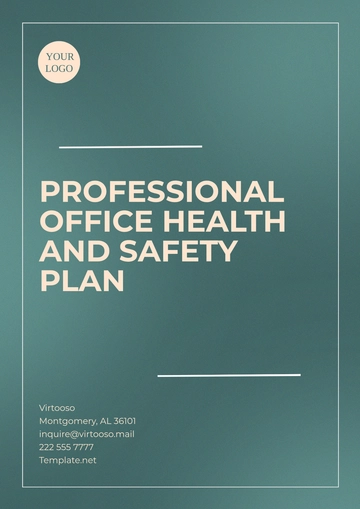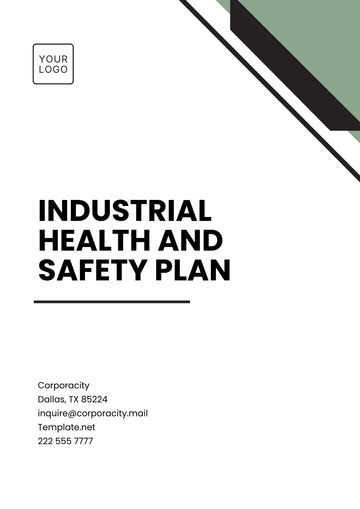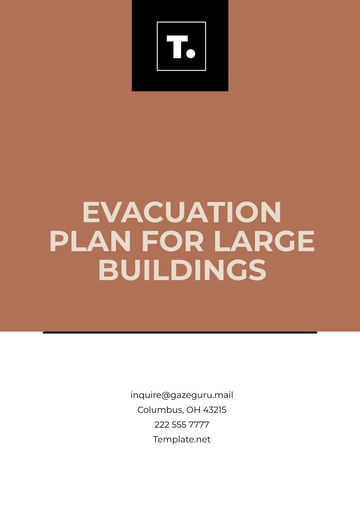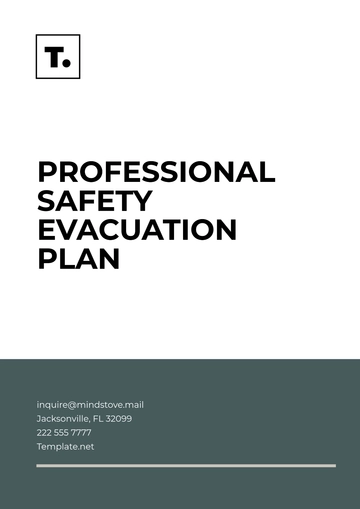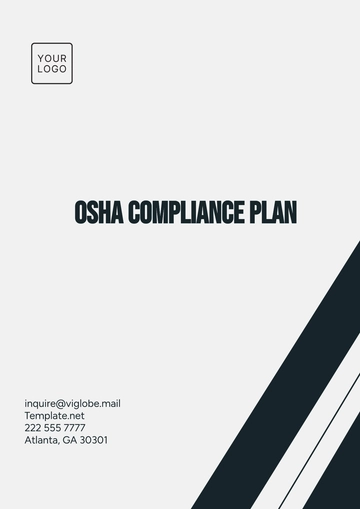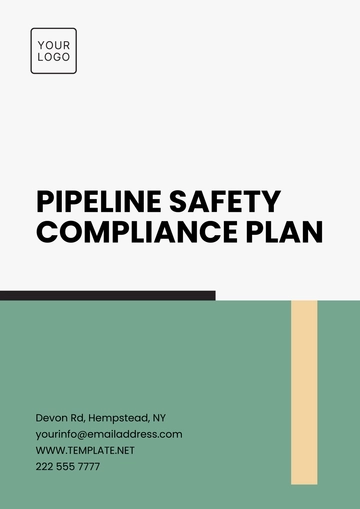Free Strategic Safety Plan
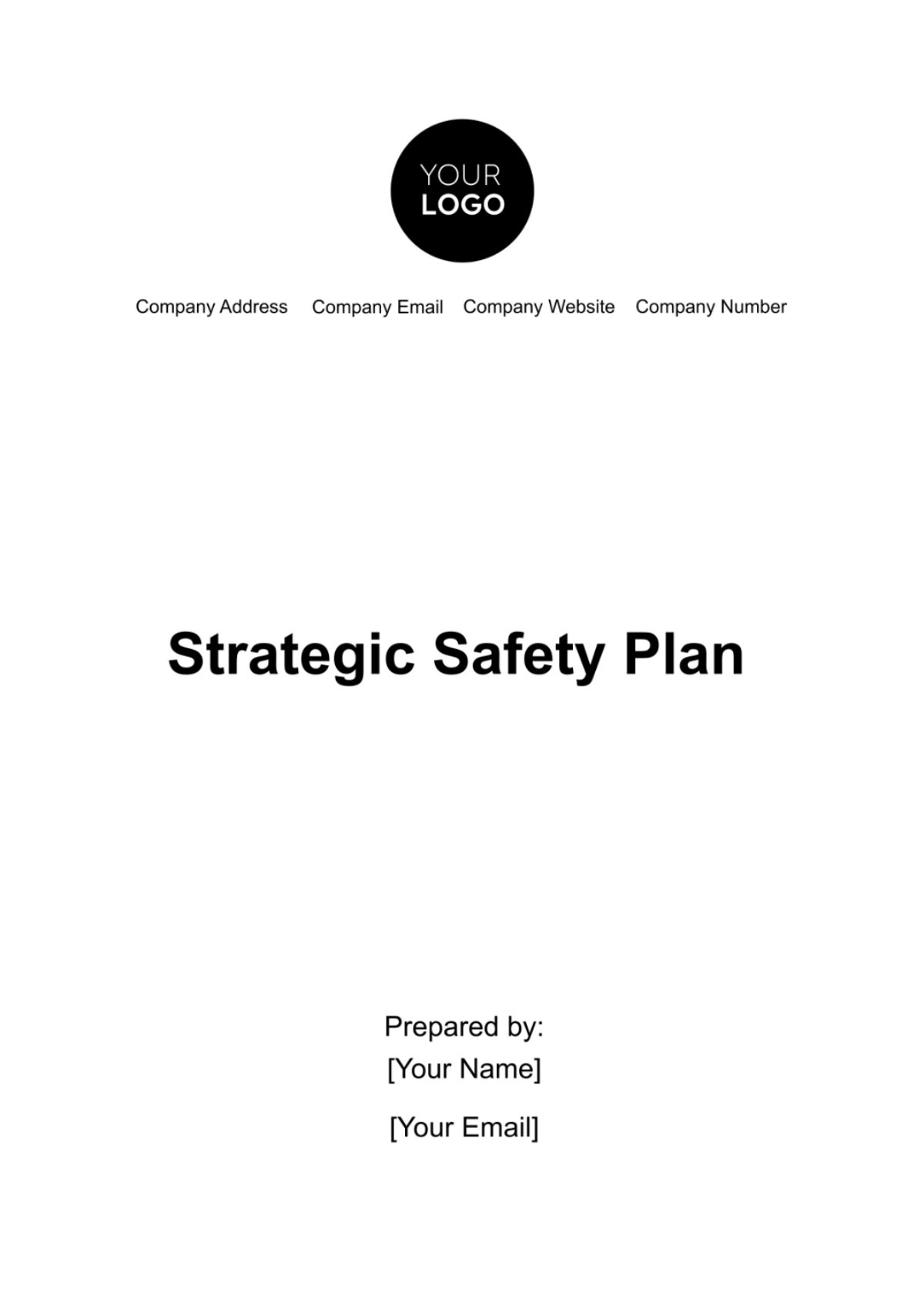
I. Executive Summary
Purpose and Goals of the Plan:
This Strategic Safety Plan aims to systematically enhance workplace safety, reduce the risk of accidents, and ensure compliance with health and safety regulations. The ultimate goal is to create a safe working environment that protects employees and company assets.
Scope of the Plan:
Applicable across all departments of [Your Company Name], this plan covers various aspects of safety, including physical, chemical, ergonomic, and psychological hazards. It is designed to be flexible enough to adapt to different work environments within the company.
Key Highlights:
Key strategies include a comprehensive risk assessment process, a robust training program, continuous monitoring and improvement, and fostering a strong culture of safety.
II. Safety Policy and Culture
Establishing a strong safety policy and culture is the foundation of this strategic plan. This section outlines [Your Company Name]'s commitment to safety, detailing the core principles and the cultural shift towards safety.
A. Safety Vision and Mission
Our vision is to create a workplace where safety is ingrained in every action and decision. The mission is to continuously strive for a zero-incident work environment through proactive risk management and employee empowerment.
B. Culture of Safety
Initiatives to cultivate a safety-centric culture include regular safety discussions, recognition programs for safe behavior, and encouraging employee participation in safety committees. Leadership commitment to safety is emphasized to set a positive example.
Initiative | Description | Frequency | Target Group |
Safety Meetings | Discuss current safety topics and issues | Monthly | All Employees |
Safety Awards | Recognize individuals for outstanding safety practices | Quarterly | Employees & Teams |
Safety Committees | Regular review and improvement suggestions | Bi-monthly | Cross-Departmental |
Safety Training Workshops | Interactive workshops on safety practices | Annually | New Hires & Existing Employees |
Leadership Safety Talks | Talks by leadership emphasizing safety importance | Quarterly | All Employees |
C. Roles and Responsibilities
Clearly defined roles and responsibilities are outlined for all employees. From executives to entry-level workers, everyone is accountable for upholding safety standards. Specific responsibilities include regular safety checks, reporting hazards, and participating in safety training.
Role | Responsibilities | Accountability Measures |
Executives | Formulate and endorse safety policies | Safety Performance Reviews |
Department Heads | Implement safety protocols in departments | Regular Safety Audits |
Safety Officers | Monitor compliance, conduct training | Incident Reporting and Analysis |
All Employees | Follow safety procedures, report hazards | Participation in Training and Drills |
HR Department | Facilitate safety training programs, manage feedback | Training Completion Rates |
III. Risk Assessment and Management
Risk assessment and management are critical components of the safety plan. This section details the systematic approach to identifying, analyzing, and managing workplace hazards and risks at [Your Company Name].
A. Hazard Identification
We use a variety of methods to identify hazards, including workplace inspections, employee feedback, and accident data analysis. Special attention is given to high-risk areas and processes.
Method | Description | Frequency | Focus Areas |
Workplace Inspections | Comprehensive checks of the workplace environment | Monthly | High-risk areas, machinery, and common spaces |
Employee Feedback | Collecting and analyzing safety concerns from employees | Ongoing | All departments |
Accident Data Analysis | Reviewing past incident reports for pattern identification | Quarterly | Areas with previous incidents |
Equipment Audits | Inspecting tools and machinery for safety compliance | Bi-monthly | Manufacturing, maintenance areas |
Environmental Monitoring | Monitoring air quality, noise levels, and other environmental factors | Semi-annually | Production floors, warehouses |
B. Risk Analysis and Prioritization
Risks are analyzed based on their potential impact and likelihood of occurrence. This analysis helps in prioritizing risks, ensuring that resources are allocated effectively to address the most significant threats.
Risk Factor | Impact Assessment | Likelihood Assessment | Priority Level |
Electrical Hazards | High (Injury potential) | Moderate (Occasional issues) | High Priority |
Chemical Spills | Moderate (Containable) | Low (Rare occurrences) | Medium Priority |
Ergonomic Risks | Low (Long-term effects) | High (Frequent in office areas) | Medium Priority |
Fire Risk | High (Severe damage potential) | Low (Well-controlled environment) | High Priority |
Slip and Trip Hazards | Moderate (Injury risk) | High (Common in certain areas) | High Priority |
C. Preventive and Mitigation Strategies
Strategies include engineering controls to eliminate hazards, administrative controls to reduce risk exposure, and personal protective equipment. Regular drills and emergency response plans are also part of the mitigation strategies.
Hazard Type | Preventive Measures | Mitigation Strategies |
Electrical Hazards | Regular electrical safety audits; Upgrading installations | Emergency shut-off procedures; Staff training |
Chemical Spills | Proper storage protocols; Regular handling training | Spill response kits; Emergency response drills |
Ergonomic Risks | Ergonomic assessments; Adjustable workstations | Health and wellness programs; Regular breaks |
Fire Risk | Installation of smoke detectors; Fire safety inspections | Fire drills; Accessible fire extinguishers |
Slip and Trip Hazards | Adequate lighting; Non-slip flooring installation | Immediate clean-up policy; Signage for wet areas |
IV. Training and Communication
Training and communication are key to the successful implementation of the safety plan. This section outlines the training programs and communication strategies to ensure that all employees are informed, skilled, and committed to safety.
A. Safety Training Programs
Training programs are designed for different roles and departments. These include basic safety orientation for new hires, specialized training for high-risk tasks, and periodic refresher courses for all employees.
Program Type | Description | Target Audience | Frequency |
Basic Safety Orientation | Introduction to workplace safety protocols | New Hires | Upon Induction |
High-Risk Task Training | Specialized training for handling tasks | Employees in specific roles | Annually or as required |
Refresher Courses | Update on latest safety practices and protocols | All Employees | Bi-annually |
Emergency Response Training | Procedures for responding to emergencies | All Employees | Annually |
Health and Wellness Programs | Training on ergonomics, mental health | All Employees | Quarterly |
B. Communication Plan
Regular safety meetings, bulletins, and updates via internal communication channels keep safety in the forefront of employees’ minds. The plan includes methods to ensure that safety messages are clear, consistent, and reach all employees.
Communication Method | Purpose | Frequency | Delivery Mode |
Safety Meetings | Discuss recent safety updates and issues | Monthly | In-Person / Virtual |
Safety Bulletins | Provide information on safety topics | Bi-monthly | Email / Notice Boards |
Updates via Internal Channels | Announce changes to safety procedures | As needed | Intranet / Emails |
Leadership Safety Messages | Messages from management to reinforce safety culture | Quarterly | Email / Meetings |
Safety Campaigns | Themed safety campaigns to promote awareness | Annually | Multiple Channels |
C. Feedback Mechanisms
Channels such as suggestion boxes, safety hotlines, and regular surveys are established to encourage employees to report hazards and provide feedback on safety issues. This feedback is crucial for the continuous improvement of safety practices.
Feedback Channel | Description | Purpose | Accessibility |
Suggestion Boxes | Anonymous submission of safety suggestions | Encourage open feedback | Common Areas |
Safety Hotlines | Dedicated phone line for reporting hazards | Immediate hazard reporting | 24/7 Availability |
Regular Surveys | Structured questionnaires on safety perception | Gather structured feedback | Bi-annually |
Safety Committee Meetings | Forum for discussing safety concerns | Direct employee engagement | Quarterly |
Online Feedback Forms | Electronic forms for safety feedback | Convenience and accessibility | Continuously Available |
V. Monitoring, Evaluation, and Continuous Improvement
Continuous monitoring, evaluation, and improvement are essential for the dynamic nature of workplace safety. This section addresses the mechanisms in place at [Your Company Name] for assessing safety performance and making necessary enhancements. Key performance indicators include incident rates, audit results, training completion rates, and employee safety engagement scores. These metrics are regularly monitored to assess the effectiveness of safety initiatives.
Scheduled audits and safety assessments help in identifying compliance issues and areas for improvement. These are conducted by internal teams or external experts, depending on the requirement. Based on audit findings and employee feedback, the safety plan is regularly reviewed and updated. This iterative process ensures that the safety strategies remain effective and relevant to the changing workplace environment.
© [Year] [Your Company Name]. All Rights Reserved.
- 100% Customizable, free editor
- Access 1 Million+ Templates, photo’s & graphics
- Download or share as a template
- Click and replace photos, graphics, text, backgrounds
- Resize, crop, AI write & more
- Access advanced editor
Plan and implement safety measures effectively with Template.net's Strategic Safety Plan Template. This editable and customizable tool offers a structured framework for developing comprehensive safety plans. Utilize our intuitive Ai Editor Tool to tailor the plan to your organization's specific needs effortlessly, ensuring a safe and secure work environment.
You may also like
- Finance Plan
- Construction Plan
- Sales Plan
- Development Plan
- Career Plan
- Budget Plan
- HR Plan
- Education Plan
- Transition Plan
- Work Plan
- Training Plan
- Communication Plan
- Operation Plan
- Health And Safety Plan
- Strategy Plan
- Professional Development Plan
- Advertising Plan
- Risk Management Plan
- Restaurant Plan
- School Plan
- Nursing Home Patient Care Plan
- Nursing Care Plan
- Plan Event
- Startup Plan
- Social Media Plan
- Staffing Plan
- Annual Plan
- Content Plan
- Payment Plan
- Implementation Plan
- Hotel Plan
- Workout Plan
- Accounting Plan
- Campaign Plan
- Essay Plan
- 30 60 90 Day Plan
- Research Plan
- Recruitment Plan
- 90 Day Plan
- Quarterly Plan
- Emergency Plan
- 5 Year Plan
- Gym Plan
- Personal Plan
- IT and Software Plan
- Treatment Plan
- Real Estate Plan
- Law Firm Plan
- Healthcare Plan
- Improvement Plan
- Media Plan
- 5 Year Business Plan
- Learning Plan
- Marketing Campaign Plan
- Travel Agency Plan
- Cleaning Services Plan
- Interior Design Plan
- Performance Plan
- PR Plan
- Birth Plan
- Life Plan
- SEO Plan
- Disaster Recovery Plan
- Continuity Plan
- Launch Plan
- Legal Plan
- Behavior Plan
- Performance Improvement Plan
- Salon Plan
- Security Plan
- Security Management Plan
- Employee Development Plan
- Quality Plan
- Service Improvement Plan
- Growth Plan
- Incident Response Plan
- Basketball Plan
- Emergency Action Plan
- Product Launch Plan
- Spa Plan
- Employee Training Plan
- Data Analysis Plan
- Employee Action Plan
- Territory Plan
- Audit Plan
- Classroom Plan
- Activity Plan
- Parenting Plan
- Care Plan
- Project Execution Plan
- Exercise Plan
- Internship Plan
- Software Development Plan
- Continuous Improvement Plan
- Leave Plan
- 90 Day Sales Plan
- Advertising Agency Plan
- Employee Transition Plan
- Smart Action Plan
- Workplace Safety Plan
- Behavior Change Plan
- Contingency Plan
- Continuity of Operations Plan
- Health Plan
- Quality Control Plan
- Self Plan
- Sports Development Plan
- Change Management Plan
- Ecommerce Plan
- Personal Financial Plan
- Process Improvement Plan
- 30-60-90 Day Sales Plan
- Crisis Management Plan
- Engagement Plan
- Execution Plan
- Pandemic Plan
- Quality Assurance Plan
- Service Continuity Plan
- Agile Project Plan
- Fundraising Plan
- Job Transition Plan
- Asset Maintenance Plan
- Maintenance Plan
- Software Test Plan
- Staff Training and Development Plan
- 3 Year Plan
- Brand Activation Plan
- Release Plan
- Resource Plan
- Risk Mitigation Plan
- Teacher Plan
- 30 60 90 Day Plan for New Manager
- Food Safety Plan
- Food Truck Plan
- Hiring Plan
- Quality Management Plan
- Wellness Plan
- Behavior Intervention Plan
- Bonus Plan
- Investment Plan
- Maternity Leave Plan
- Pandemic Response Plan
- Succession Planning
- Coaching Plan
- Configuration Management Plan
- Remote Work Plan
- Self Care Plan
- Teaching Plan
- 100-Day Plan
- HACCP Plan
- Student Plan
- Sustainability Plan
- 30 60 90 Day Plan for Interview
- Access Plan
- Site Specific Safety Plan
